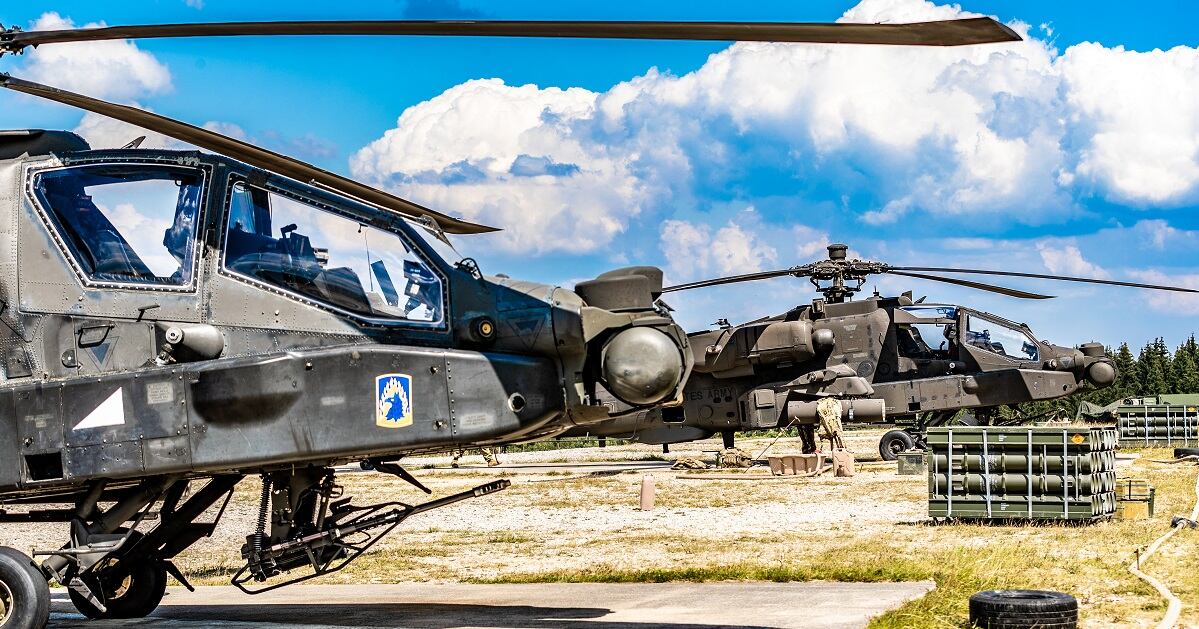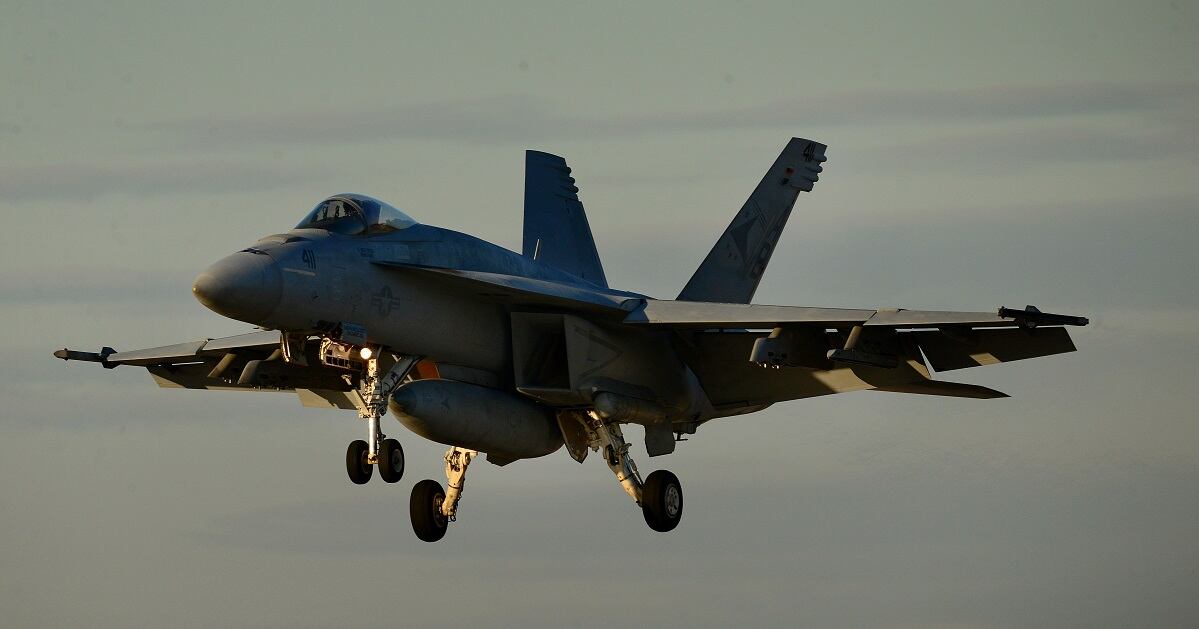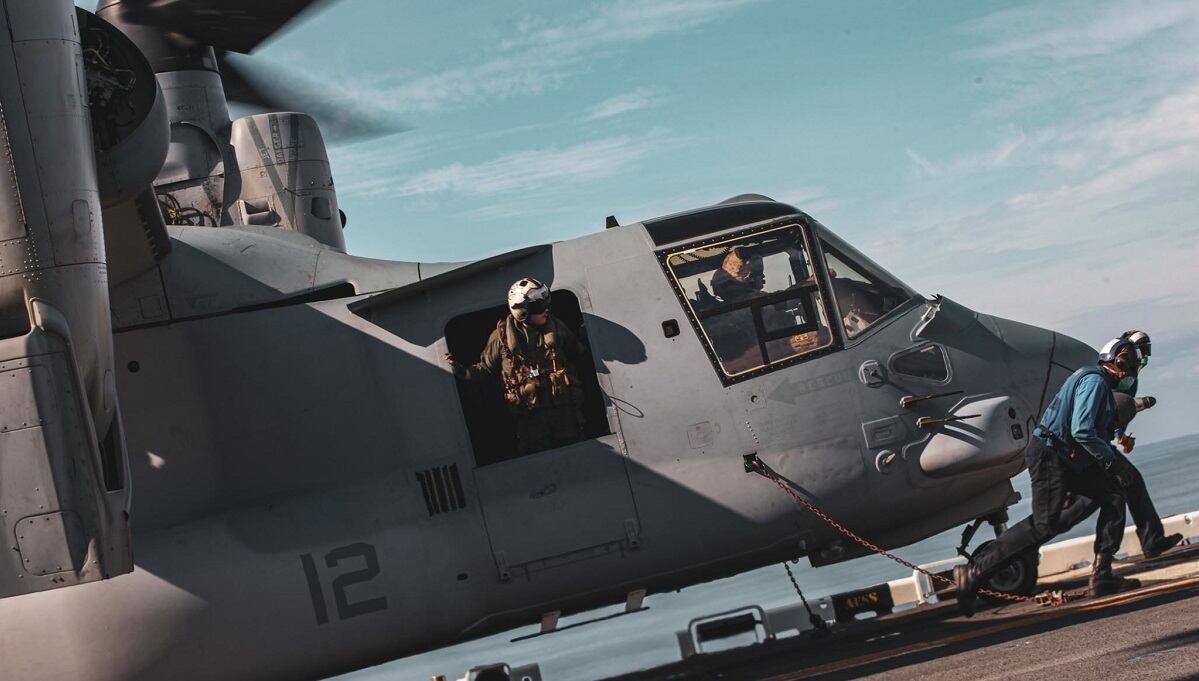For years, the military’s critics have raised alarms about its aircraft readiness, and whether concerning numbers of airplanes and helicopters have not been ready to fly.
A new report from the Government Accountability Office released Thursday shows just how bad the problem has gotten — not just in the Air Force, but also in the Navy, Marine Corps and Army.
In the report, which was requested by Congress, GAO said that it studied readiness rates for 46 aircraft across those four services between fiscal 2011 and fiscal 2019. Of those, only three met their annual mission-capable goals for a majority of those years: The Navy’s EP-3E Aries II and E-6B Mercury and the Air Force’s UH-1N Huey helicopter. The EP-3 hit seven of its annual goals, the E-6B hit it during five years, and the UH-1N met its goal during all nine years.
Even more concerning, 24 of the aircraft GAO reviewed never met their annual goals once in that nine-year span.
The average annual mission-capable rates for selected Air Force, Navy and Marine Corps aircraft decreased overall since 2011, according to the GAO. The average mission-capable rate for the selected Army aircraft slightly increased.
Mission-capable rates are the percentage of total time when an aircraft can fly and perform at least one mission, GAO said, and is one of the key metrics used to assess the health and readiness of an aircraft fleet.
Readiness problems are especially worrisome because the Defense Department spends tens of billions of dollars each year to sustain weapon systems such as aircraft. Of all the costs a weapon system will incur during its entire life cycle, operating and support costs — including spare parts, depot and field maintenance, personnel and engineering support — typically account for about 70 percent of those expenses.

But large swaths of the military’s aircraft fleet were not anywhere close to meeting their readiness goals, GAO found. Of the 46 aircraft reviewed, 19 were more than 15 percentage points below the readiness goals set by their services, including 11 that were 25 percentage points or more below-goal. Another 18 aircraft were anywhere from six to 15 percentage points below their goals.
RELATED

GAO focused on manned fixed- and rotary-wing aircraft supporting combat-related missions, but did not review other aircraft focusing on other missions such as training or moving high-priority passengers or cargo.
There are a variety of complicating factors hurting the military’s ability to keep its least-ready airplanes in the air, GAO’s report said.
The Air Force’s B-1B Lancer bomber, for example — one of the planes that never met its goals — is aging and has had its service life extended. The B-1 is also dealing with unscheduled maintenance, and a shortage of and delay in acquiring spare parts that worsens a maintenance backlog, GAO said.
During his nomination hearing last August, Vice Chairman of the Joint Chiefs of Staff Gen. John Hyten told lawmakers that just six of the Air Force’s 62 B-1s were mission-capable at that time. Hyten said in the hearing that deployment after deployment was “just beating the heck out of” the B-1, leaving dozens either in depots for maintenance or otherwise down for other problems or inspections. The B-1 was also grounded in 2018 over problems with its ejection seats, and again in 2019.
The Air Force’s C-5M Super Galaxy, C-130J Super Hercules and F-22 Raptor are also facing problems with the unexpected need for repairs and parts replacement, unscheduled maintenance and parts shortages and delays. Some of the manufacturers who make or supply spare parts needed by the C-130J and F-22 are drying up, and some parts used by the C-130J are becoming obsolete and unavailable.
The Navy’s F/A-18E and F Super Hornet is also struggling with a service life extension, unexpected repairs and parts replacements, delays in depot maintenance and a shortage of trained maintainers and supply shortages. And the Marine Corps’ MV-22B Osprey faces unexpected parts replacements, a lack of access to technical data needed for maintenance, not enough maintainers, and parts shortages.
The F-35 Lightning II’s rates trended downward from fiscal 2015 through fiscal 2018, GAO said, before improving slightly in 2019. Overall, the F-35 recorded an increase in mission-capable rates from fiscal 2012 to 2019.
The other Air Force aircraft, in addition to the B-1, that never met their readiness goals in any of the nine years were the C-17 Globemaster III, the C-130J, the F-15C/D Eagle, the F-16 Fighting Falcon, the F-22 Raptor and the CV-22 Osprey.

In the Navy, the KC-130T Hercules, C-2A Greyhound, C-130T Hercules, E-2C Hawkeye, E-2D Advanced Hawkeye, F/A-18 E/F Super Hornet, and MH-60S Seahawk never met readiness goals.
For the Marine Corps, the KC-130T and KC-130J Super Hercules, AV-8B Harrier II, F/A-18 A-D Hornet, AH-1Z Viper, CH-53E Super Stallion, MV-22B Osprey, and UH-1Y Venom consistently missed the mark.
And three Army helicopters — the AH-64 Apache, CH-47 Chinook and UH/HH-60 Black Hawk — never met their service’s goal.
The military has tried to improve its readiness rates in recent years — most publicly in September 2018, when former Defense Secretary Jim Mattis released a memo ordering the Air Force and Navy to get mission-capable rates for the F-22, F-16, F-35, and several variants of the Navy’s F/A-18 aircraft up to at least 80 percent by the end of 2019.
That didn’t happen, however. While there was some improvement, the services never met that goal, and it has since been quietly dropped.

The Navy told the public in late September 2019 that the F/A-18E/F Super Hornet and EA-18G Growler had met the 80 percent goal, GAO said. But GAO’s own analysis showed that wasn’t so. While those planes’ rates did improve throughout 2019 and hit 80 percent mission-capable at certain times that year, GAO said, when the data was averaged throughout the year, none of those planes consistently reached that goal.
Air Force Chief of Staff Gen. Charles “CQ” Brown said at his nomination hearing in May that the Office of the Secretary of Defense decided that the 80 percent goal was not a requirement in fiscal 2020. An OSD official told GAO that the department had decided to move away from a goal focusing narrowly on selected aircraft, in favor of a “more holistic view of readiness.”
At that hearing, Brown also cited peaks of readiness for the F-16, F-22 and F-35 at certain points throughout 2019. But the actual year-long average mission capable rates for those planes were lower — in some cases, considerably lower — than those high-water marks.
Stephen Losey is the air warfare reporter for Defense News. He previously covered leadership and personnel issues at Air Force Times, and the Pentagon, special operations and air warfare at Military.com. He has traveled to the Middle East to cover U.S. Air Force operations.





